PGA Tour Grip Styles Part 1
- by Kelvin Miyahira
Spanish Translation by Fabian Lozano Medina CLICK HERE
The most basic fundamental of all in golf is the grip. Everyone’s first lesson begins with how to put your hands on the club. But surely this is so simple that everyone gets it right. Just put your hands on the club and use a Vardon overlap, interlocking or ten-finger grip, set the “V’s” of your hands to your right collar and you’re ready to go right? Not so fast. Has anyone ever thought to check how the best players in the world really grip the club? I know I’ve taught for over 25 years and never bothered to re-examine nor verify the correctness of the grip I was taught by some of the “best” teachers in the world. And can your grip affect your impact position and the type of release you have? Ohhhhhhhhhhhhh yeah!!!!!!
After a survey of over 200 tour players from around the world, I’ve found some correlations in gripping the club that definitely influences the type of release you will have. So if you’re a flipper, slicer, fader, hooker or struggle with inconsistency, there are a few key points to follow and you can immediately improve your ballstriking. But first, a little history.
History of the weak and neutral grip

There was a young golfer who possessed all the power in world but fought a nasty hook. He couldn’t win on tour with the hook much less one of the coveted majors. Ahhhhhh, but then he figured out how to hold the club so that he had virtually no chance of hooking it ever again. Shot after shot became a small fade and the legend grew as he won many golf tournaments including nine major tournament victories. The legend of course, was Ben Hogan and he figured out by using a weak left hand grip he would never hook. His left thumb was straight down the top of the shaft with a short thumb and that worked like magic for him.
But his right hand was also in a “weak” position with his “V” pointing to his chin. And with the successful sales of his “Five Lessons: The Modern Fundamentals of Golf” book, Hogan influenced the way millions of golfers gripped the club.
While this may have worked perfectly for Hogan, could this be the reason that many have tried and failed at copying Hogan? And to the millions of golfers that are hitting weak fades or slices, why would you copy the grip of a player that doesn’t have the same problems you face? And even if you are fighting a hook and have a strong grip, is the only answer a weak grip?
Regardless of following logic or not, we have a huge inclination towards the weak grip. Next comes David Leadbetter with his ground-breaking book in 1990, “The Golf Swing” and riding on Nick Faldo’s success, he definitely set the tone for the next few decades that the “neutral grip” should dominate golf. But the problem is that Leadbetter promoted a weaker grip than what Faldo actually used.

Here’s Faldo with a somewhat strong looking grip.
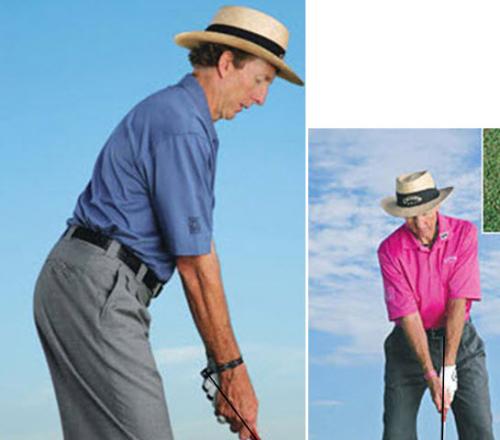
Now compare that with Leadbetter’s grip. As you can see there are obvious difference between the grip Faldo used and what Leadbetter promotes. So the question as always is, “Do we copy what the great golfer did or do we listen to what the interpretation of the teacher is?” To me the answer is obvious but millions of golfers are answering the question differently.
What We’re Taught
When learning your grip, you probably were taught that there was an interlocking grip, overlap grip and a ten-finger grip. Then you were most likely taught to have a “neutral” grip. Strong grips were thought to be bad in that it might lead you to hooking. Weak grips are thought to produce slicing or fading. Since most people want to hit it straight, the neutral grip is the logical choice.
But is it possible that all of these assumptions about the grip are based on the idea that all golfers flip/roll their hands through impact? Of course, if you have a strong grip and flip or roll your hands, the likelihood of hooking is pretty high. But what if you don’t intend on flipping it?
Or what if you are intent on ridding yourself of the flip and have a weak grip, might it be possible that there is no way you will overcome this since the clubface will always tend to be very open and necessitate a flip/roll release just to have a chance to put the ball in the fairway?
Strong Argument for a Stronger Grip
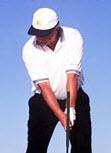
Jack Nicklaus, who also played a power fade, used a neutral left hand grip and a strong right hand grip.
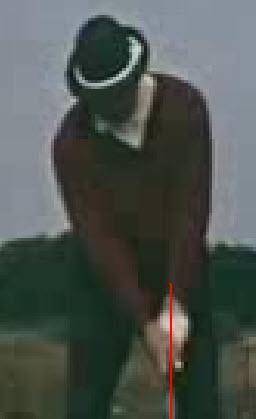
Sam Snead looks like he used a slightly strong grip.
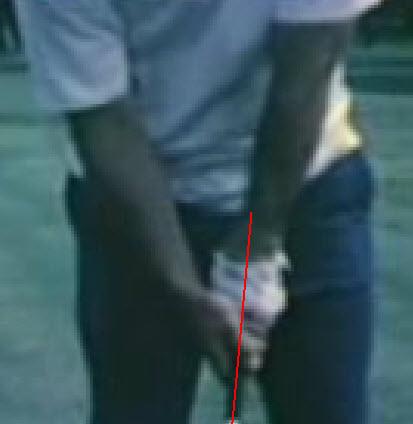
Arnold Palmer used a very strong grip and had a closed clubface at the top.

If you’ll remember former world #1 David Duval’s grip, he had a very strong grip and a closed clubface at the top. But he didn’t flip it! So he didn’t hook. He instead played a power fade. Just like Lee Trevino did with his extreme strong grip.
But Duval, giving in to criticism of his swing and his “unusual clubface positions” he tried to change with the “help” of Leadbetter, then Hank Haney and then what? His game disappeared. Now that he’s decided to go back to his old swing and grip, he’s playing much better.
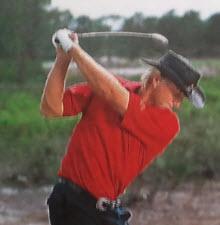
Greg Norman played with a slightly closed clubface and slightly strong grip when he was #1 in the world.
Others with strong grips
Tom Watson, in his prime also had a strong grip and a closed clubface and won many majors. Paul Azinger, Fred Couples, Bernhard Langer, Payne Stewart, Lee Janzen, Hubert Green, Bob Tway and others had strong grips and won major tournament titles.
So where did this notion of what a square clubface is at the top of the backswing come from and who said it is the optimal way to play golf? Is it possible that this is just someone’s interpretation or that Hogan’s way is the best way? How do we know what’s right?
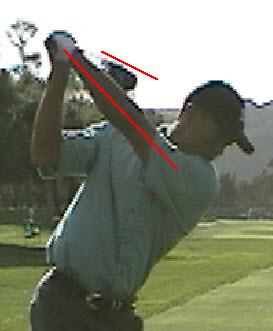
Even Tiger Woods played his best golf with a slightly closed clubface and a strong grip. So maybe the record speaks for itself?

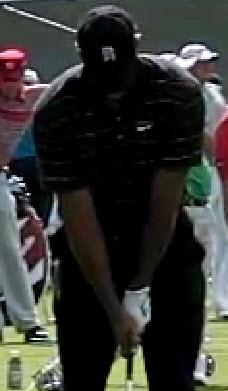
Of course he can weaken his grip and open the clubface but play worse...
Thus, given all these players with strong grips and were great champions, why is it that the strong grip has such a negative connotation to it?
If left to Lead, we’d all be flippers with neutral grips. If left to Haney, we’d all be flip/rollers with neutral to weak grips.
The Research Findings
After another exhausting research project on over 200 PGA tour pros, I have found that the grip that is most commonly used, is what we would once have termed a “strong grip.” At least 60% of the tour pros use this grip so I’m going to call it the “standard strong” grip. Then there are about 20% that use an extremely strong grip or as one tour pro called it, the “Harley Grip.” Thus, 80% of the tour players are using either a standard strong grip or an extreme strong grip.
Then only 10% of the players used a weak or neutral grip consisting of both hands in the weak or neutral position that Leadbetter promotes.
The final 10% of the players are using a combination of either strong left/weak right or weak left /strong right hand grip.
Therefore, the neutral grip that is almost universally taught, is used by only a small percentage of the tour pros. Could it be that they succeed because they don’t listen??? But for the millions of golfers worldwide that are “good students” who listen, they are in for a lifetime of endless struggle.
Determining Strong, Standard or Weak/Neutral
Perhaps a little understanding of what these classifications really mean is in order. A strong grip means that the clubface will have a “closed bias.” A standard grip means that the clubface will have a “square bias.” And a weak grip will have an “open bias.”
It does not mean that every strong grip player will have a hook or every weak grip player will have a fade or slice. Better players will compensate better. Poorer players will succumb to the closed or open predisposition of the clubface position that the grip inclines toward mainly because they flip and roll their hands.
ASSESSING THE LEFT HAND GRIP
Radius Bone and Midline of the shaft
For years, we have counted the knuckles on the left hand to determine what type of left hand grip (strong, neutral, weak) you have. But the direction the shaft points at address can alter the appearance of the grip. See below. If you take a grip with the shaft pointing to your navel, then shift the hand position forward without changing your grip, the grip will now look weaker since you won’t be able to see as many knuckles. So this is not a good way to classify grips.

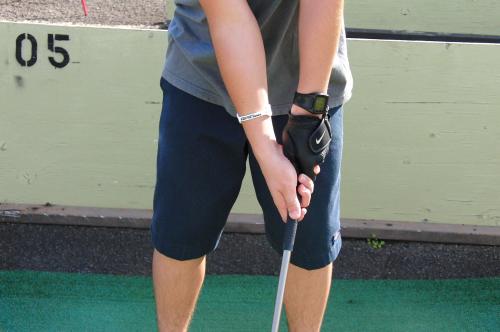
So obviously there needs to be a better way to classify the grip and that would be to draw a line up the midline of the shaft (from front view) and see where the radius bone of the left forearm is in relation to the shaft.

Here’s the radius bone of the left hand pictured from target line view. In the address position, your radius bone will be in the superior (top) position.
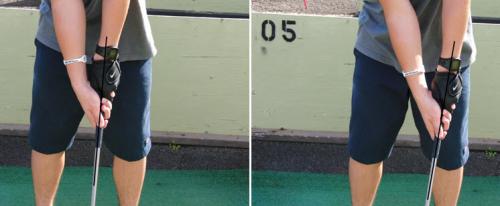
By using this line, it minimizes the different shaft positions as you can see. In both cases, his radius bone is just to the golfer’s right of the line (away from target).
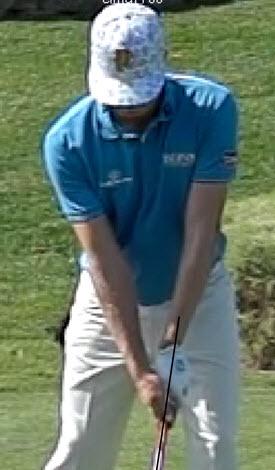
Here’s Nick Watney with the line drawn along the midline of the shaft and through the grip, one can see the radius bone is clearly on the right side of the shaft or away from the target. This would be considered an extreme strong left hand grip.
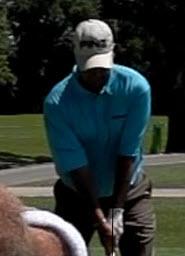
Here’s Chris DiMarco with a weak left hand grip. You can clearly see the radius bone is to the left or toward the target in relation to the midline of the shaft.
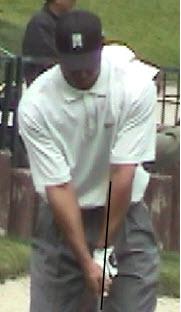
A standard grip is shown by a younger Tiger. The midline of the shaft runs right through the radius bone.
Left Elbow Position: Internal or External Shoulder Rotation at Address
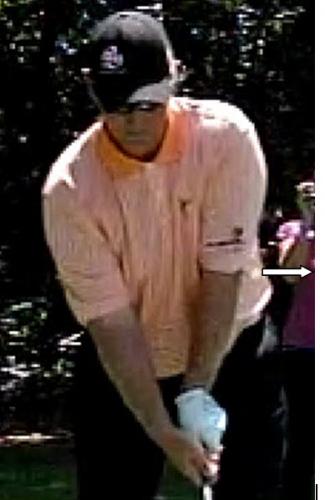
Another factor that affects the strength of the left hand grip is the position of the left elbow. If the left elbow is pointing toward the target, this will make the grip even stronger (closed clubface bias). This means the left shoulder starts at address in an internally rotated position.
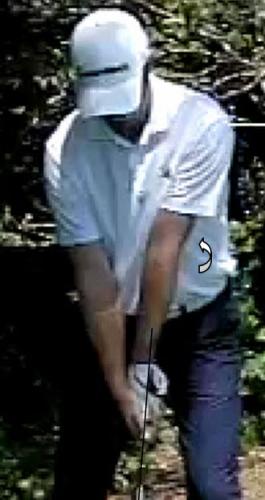
Here’s Martin Laird’s with a strong left hand grip. But his left elbow is pointed more back toward the left hip. This means his left shoulder is externally rotated at address. This is something that Hogan used to help alleviate the hook albeit with a far weaker grip. I shall explain why this is so later in the article.

But if you take a weak/neutral grip, then rotate the left elbow to point toward your left hip as Leadbetter is showing here, that makes the grip even weaker!!! Unless you’re a hooker, this grip and left arm position should be avoided and even then you may need to reconsider it.
ASSESSING THE RIGHT HAND GRIP
Using the “V” of the right hand to determine whether strong or weak is very difficult for the same reason as using knuckles of the left hand.
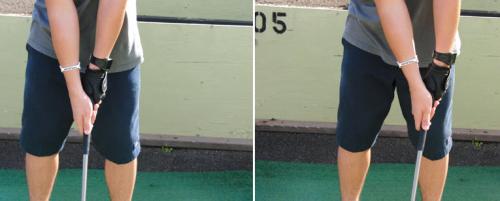
Here’s Kaleo again demonstrating a neutral grip in two ways. First with the hands centered, then with the hands ahead. Again, the same grip will appear to be weaker when the hands are more forward at address.
With no change in the grip, his right hand “V” could be anywhere from pointing to his collarbone or almost to his left shoulder. So it can’t be the only way to determine how your right hand is gripping the club.
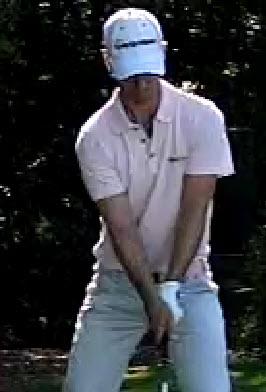
But if you see a centered shaft position (pointing close to navel) like Richard S Johnson and a “V” pointed to the left shoulder, that’s weak.
Bowed, Flat or Cupped Right Wrist
Another way to help determine grip strength would be whether the right hand is in a bowed, flat or cupped position at address.
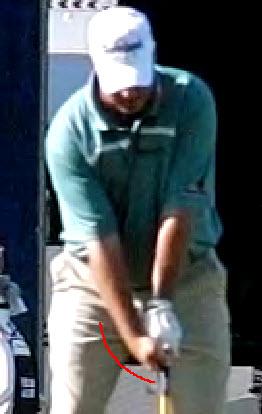
Boo Weekley displays a strong right hand grip with a bowed position. The “V” on his right hand is pointing near his right hip.
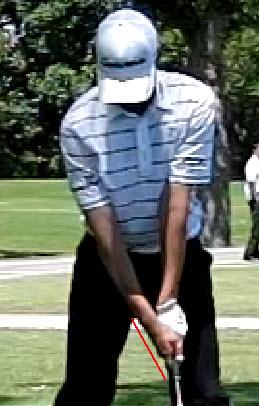
Sean O’Hair has a more standard right hand grip that has a flat wrist position.
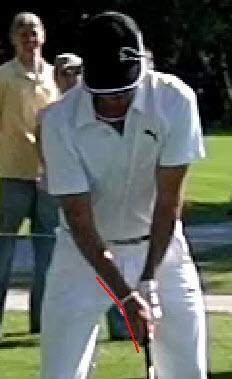
Rickie Fowler has a cupped right wrist at address. His “V” might be pointed similar to Sean’s but due to the cupped wrist position, it is a bit weaker.
Right Forearm: Supinated or Pronated
Closely related to the bowed or cupped position of the right wrist is the right forearm position.
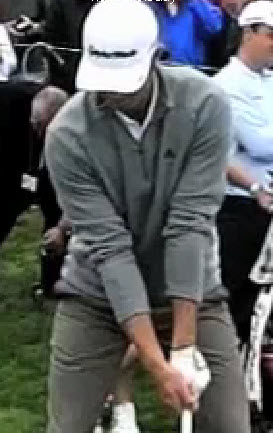
Dustin Johnson has his right forearm in a slightly supinated position. This also affects his right shoulder which appears to externally rotated. This makes the grip a bit stronger.
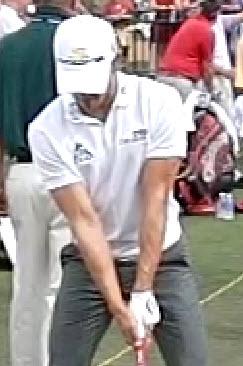
Camilo Villegas looks even more supinated in the right forearm. His right elbow is pointed back toward his right hip. This shows some right shoulder external rotation at address. This makes his grip stronger.
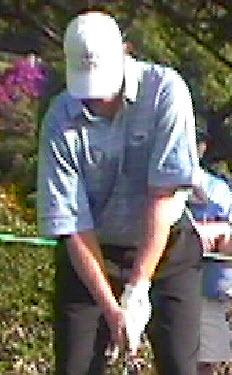
Contrast that with the right forearm of Ernie Els. His right arm is slightly pronated and his shoulder is slightly internally rotated judging by the position of his right elbow pointed slightly away from the target. This makes his grip a bit weaker.
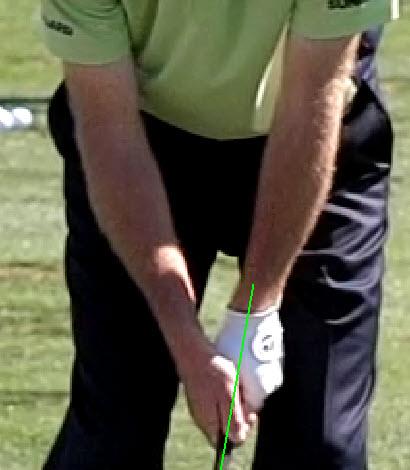
Straight-hitting Jim Furyk has his forearm in a neutral position.
Right Index Knuckle Position
The index finger’s metacarpophalangeal joint (MCP joint) can also give you an idea of where your hands are on the club.
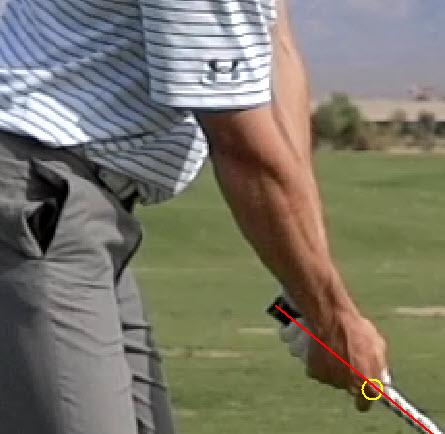
Here’s a close up of Jamie Sadlowski’s grip.

Here’s Nick Watney with his MCP joint right on the side of the shaft. This would be a strong position.
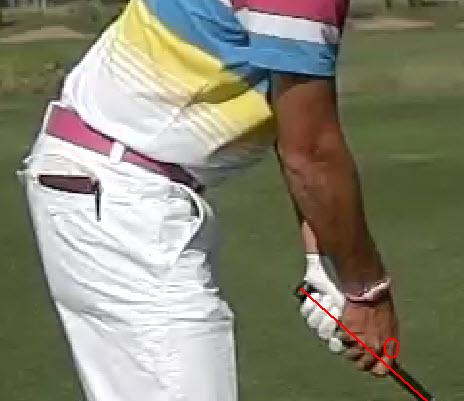
Rickie has his MCP joint way on top. This is a weak position.
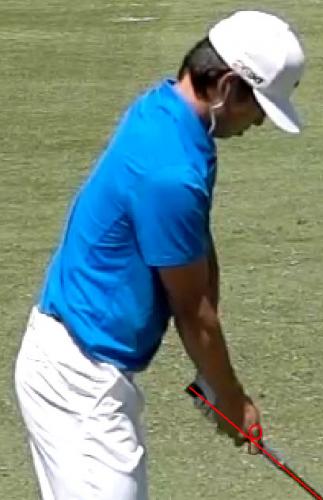
Anthony Kim has it somewhere in between. And this would be still slightly weak.
Ulnar or Radially Deviated
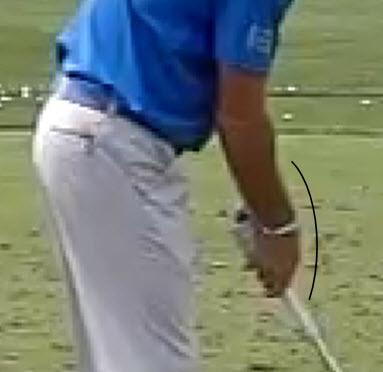
If the wrist starts in UD, that is also going to weaken the grip.
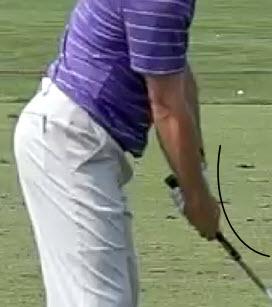
Or if in slight radial deviation as Trevor Immelman is in, it will be a bit stronger.
Putting the Squeeze?
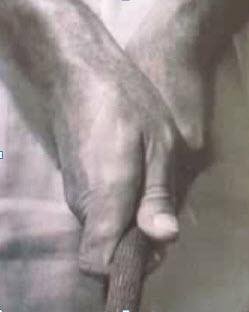
This is a Hogan idea. Not that there’s anything wrong with that... but only if you’re a hooker and even then this might not be the easiest way to golfing nirvana. The right thumb squeezing together with the MCP joint. By squeezing them together, we have now put the MCP joint on top of the shaft instead of at the 3 o’clock position. This MCP position plus the weak right hand position might be the deepest root cause of a flip. I’ll show why later.
Again, over 80% of the tour pros are not using this type of right hand grip. Still want to use it?
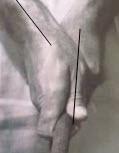
To further classify the right thumb position, see if the right thumb is parallel to the right forearm or not. Hogan’s has the cupped angle.

Here’s Matt Kuchar with a parallel thumb and forearm.

Bubba has a stronger grip so his right thumb to forearm has a more bowed appearance.

Latest anti-instruction star Tommy Gainey has an even stronger right hand grip than Bubba.
Right Thumb Pressure
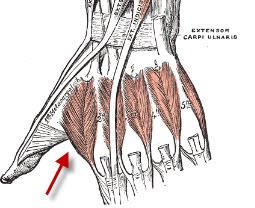

By squeezing like Hogan says, you are contracting or activating the extensor muscles of the thumb and forearm. Is this a good thing?
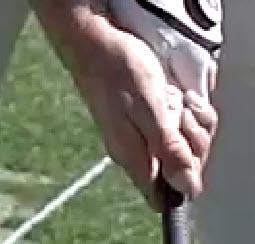
Compare that with holding the club this way, the forearm flexors are activated on the backswing. Specifically it is the flexor pollicis longus muscle that flexes the thumb. If you’ll take a close look at the thumbnail of Laird’s hand (used mainly because it is the best closeup of a strong grip I have), you can see that it is pointed down or being flexed. If you’ll look at Hogan’s thumb, it is the opposite. It is being extended or the thumbnail is pointed up which points to a contraction of the extensor pollicis longus.
Tomayto, tomahto, what does this have to do with a golf swing?
If the forearm flexors are activated, you are more likely to get the “long and low” takeaway and if we take this a step further, the right forearm is supinated at address and will typically move in the opposite direction on the backswing... pronate. This means that the clubface will have a natural tendency to remain square or closed at the top of the backswing.

A close look at Nicklaus’ right thumb shows the thumbnail pointed down. As proof of the flexors being involved, Jack was King of the wide, one-piece takeaway.

Palmer’s thumb looks flexed as well.
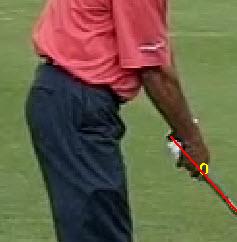
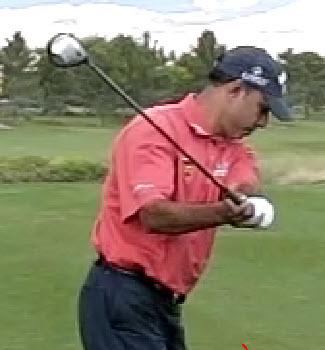
But if you start with the right forearm extensors activated and the right forearm pronated, you will set the wrists early and supinate your forearm during the backswing. Remember Jeev Milkha Singh’s backswing? Could this have been at the root of this movement?
Pressures and the Opposable Thumb
From Encyclopedia Britannica:
The movement of opposition is a rotary movement in which the thumb, swinging about its own axis, comes to face the lower surface of the tips of the fingers. The opposable thumb is the basis of the precision.
Thus the correct grip might not be as Hogan said but it should be the grip more similar to a caveman grabbing a tree branch to bash a dinosaur away.

And perhaps Mr. Gainey might not be invited to any hoity-toity afternoon tea parties with the way he’d grab a teacup, but perhaps his grip is more appropriate for a game of golf?
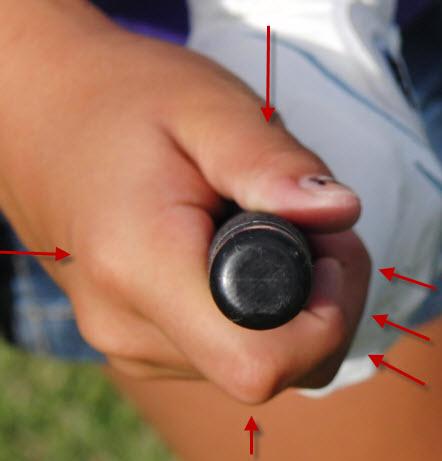
Here’s a good view looking down the shaft without a clubhead. Sydni is gripping the club with a standard strong grip. The pressures from the fingers surround the shaft from all directions. All the fingers can pull the grip against the MCP joint of the index finger and the last knuckle of the thumb (distal interphalageal joint). This might seem like a crude way of holding the club versus pinching your right thumb and index finger together like Hogan, but read on and maybe I’ll change your mind.
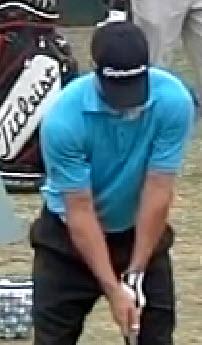
If you’ll look at a weak grip, the index finger’s MCP joint is on top of the shaft. Maybe the middle and ring fingers can pull up against the thumb and MCP joint but it seems like there’s only gripping power in the vertical direction. So is this a good way to hold the club?
But perhaps the most compelling argument would be that holding the club using the strong grip allows us to use our opposing thumb. This separates humans and other primates from the rest of the animals and allows us to develop more fine motor skills.
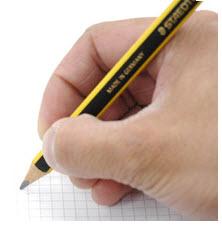
In holding a pencil, do you put the squeeze on your thumb and MCP joint or do you rest the pencil on the MCP joint for stability while your thumb flexes against the MCP joint and the other fingers?
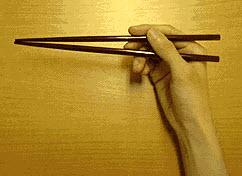
Or holding chopsticks, the bottom one is held on the MCP joint.
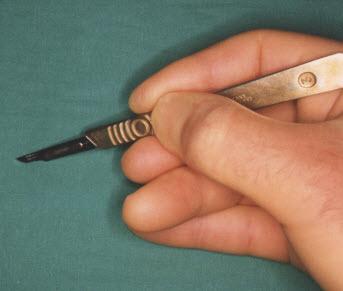
From WikiSurgery on how to hold a scalpel for “delicate dissections.” The top of the scalpel is resting on the MCP joint. Notice how the right thumb points down.

Perhaps you would not want to see your doctor holding his scalpel this way???

With the MCP joint of the right thumb on top of the shaft and pinching against the thumb, there’s less control over the shaft just as a surgeon would have less control of his scalpel.
Thus, the weak/neutral right hand “pinching” grip enables less gripping power and control. Perhaps it might be more delicate for sipping tea though.
SUMMARY OF THE GRIP POSITIONS
The best way to use this information would be to start by taking a full resolution picture of your grip from front and target line view. This will allow you to assess each position and determine what type of grip you have. It doesn’t matter what your ball flight pattern is, you should look to get your grip to a standard strong grip for starters.
Each of the following factors of the grip is listed with the three variable positions. They are listed from extreme strong first, then standard strong and last is the neutral/weak grip position.
Left hand
- Radius bone position in relation to center line of shaft: right, middle, left
- Left Shoulder position: Max IR, slight IR, ER
- Left elbow position: pointing at target, slightly left of target, toward the left hip
Right Hand
- Direction of “V”: outside right shoulder, right shoulder, anywhere left of the shoulder
- Right wrist: Bowed, flat or cupped
- Right Forearm: Supinated, neutral or pronated
- Right shoulder: Externally rotated, slightly ER, internally rotated
- Index MCP joint position: under, on, top
- Target view of right wrist: Radially deviated, neutral or ulnar deviated
- Use of opposing thumbs against all fingers (standard) or just the index (weak)
If you find that your grip matches your ball flight, you might want to change your grip. In other words, if you’ve got an extreme strong grip and hook a lot, you should move toward a standard strong grip. And if you are fading and have a weak grip, you should also move toward a standard strong grip.

If you were a beginner and could learn the standard strong grip from the start, would it help you? Just look at Vi Verawudh after her first day of learning to hit a golf ball. At the end of her lesson, she could do this. Of course hitting the ball was not very good but imagine being able to start with this movement and position instead of learning to flip it, golf would not be such a hard game.
There are more reasons to want a standard strong grip but that will have to wait until Part 2 of PGA Tour Grip Styles to find out just how your grip affects your backswing, release style and impact position.

